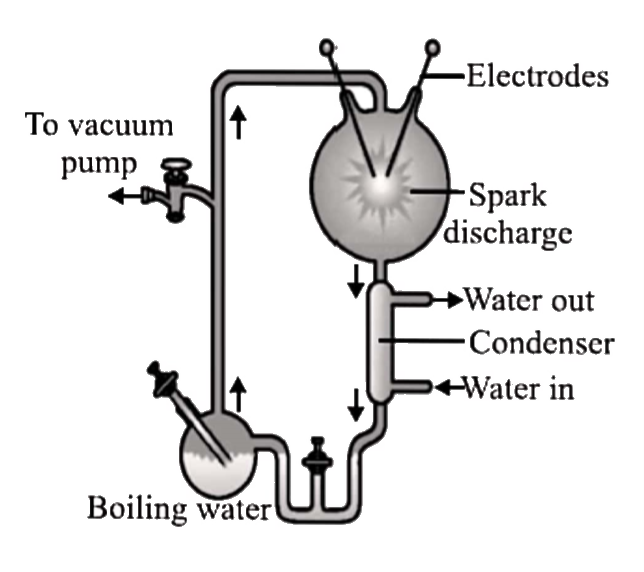Continuity of germplasm' theory was given by
Hugo de Vries
Weismann
Darwin
Lamarck
Step-by-Step Solution:
1. Understanding the Question: The question asks for the scientist who proposed the "continuity of germplasm" theory.
2. Reviewing the Options: The options provided are:
- A) Hugo de Vries
- B) Weismann
- C) Darwin
- D) Lamarck
3. Analyzing Each Option:
- Hugo de Vries: Known for the mutation theory of evolution, which states that new species arise through mutations. This does not relate to germplasm continuity.
- Weismann: Proposed the theory of continuity of germplasm, which asserts that hereditary information is passed on through germ cells (like ovaries and testes) and not through somatic cells. This directly relates to the question.
- Darwin: Developed the theory of evolution through natural selection, focusing on survival and reproduction, but not specifically on germplasm.
- Lamarck: Introduced the theory of inheritance of acquired characteristics, which is not related to germplasm continuity.
4. Identifying the Correct Answer: Based on the analysis, the correct answer is Weismann, as he specifically proposed the continuity of germplasm theory.
5. Final Answer: Weismann.
---
- A) Hugo de Vries
- B) Weismann
- C) Darwin
- D) Lamarck
- Hugo de Vries: Known for the mutation theory of evolution, which states that new species arise through mutations. This does not relate to germplasm continuity.
- Weismann: Proposed the theory of continuity of germplasm, which asserts that hereditary information is passed on through germ cells (like ovaries and testes) and not through somatic cells. This directly relates to the question.
- Darwin: Developed the theory of evolution through natural selection, focusing on survival and reproduction, but not specifically on germplasm.
- Lamarck: Introduced the theory of inheritance of acquired characteristics, which is not related to germplasm continuity.
Topper's Solved these Questions
- BOOK - ICSECHAPTER - EVOLUTIONEXERCISE - COMPETITION CORNER (OBJECTIVE TYPE QUESTIONS) (Multiple Choice Questions (MCQs))55videos
EVOLUTION
- BOOK - ICSECHAPTER - EVOLUTIONEXERCISE - COMPETITION CORNER (Assertion and Reason Type Questions (For AIIMS aspirants))26videos
EVOLUTION
- BOOK - ICSECHAPTER - EVOLUTIONEXERCISE - PREVIOUS YEAR.S BOARD PAPER QUESTIONS (Long Answer Type Questions)2videos
EVOLUTION
- BOOK - ICSECHAPTER - ENVIRONMENTAL ISSUESEXERCISE - COMPETITION CORNER (ASSERTION AND REASON TYPE QUESTIONS (FOR AIIMS ASPIRANTS))9videos
ENVIRONMENTAL ISSUES
- BOOK - ICSECHAPTER - HUMAN HEALTH AND DISEASE EXERCISE - COMPETITION CORNER (OBJECTIVE TYPE QUESTIONS) (Assertion and Reason Type Questions (For AIIMS aspirants))28videos
HUMAN HEALTH AND DISEASE
Similar Questions
Knowledge Check
- Question 1 - Select One
Cell theory was given by
ARobert HookeBRobert BrownCSchleiden and SchwannDMesselson and Stahl - Question 2 - Select One
Theory of continuity of germplasm was propounded by
AMendelBLamarckCWeismannDHaeckel
Theory of 'saltations' was given by
View SolutionPerformation theory of heredity was given by
View SolutionAccording to one vital force theory, ascent of sap is due to active pulsation of innermost layer of cortex. This theory was given by
or
In plant 'transpiration pull' theory for ascent of sap was first proposed by
(a) J.C. Bose
(b) Dixon
(c) Strasburger
(d) SachsView SolutionDiscuss the continuity of the function f(x) given by f(x)={2−xx<02+xx≥0 at x=0
View SolutionCheck the continuity of the function f given by f(x)=2x+3atx=1.
View SolutionDiscuss the continuity of the function f given by f(x)={(x,ifx≥0),(x2,ifx<0)
View Solution


